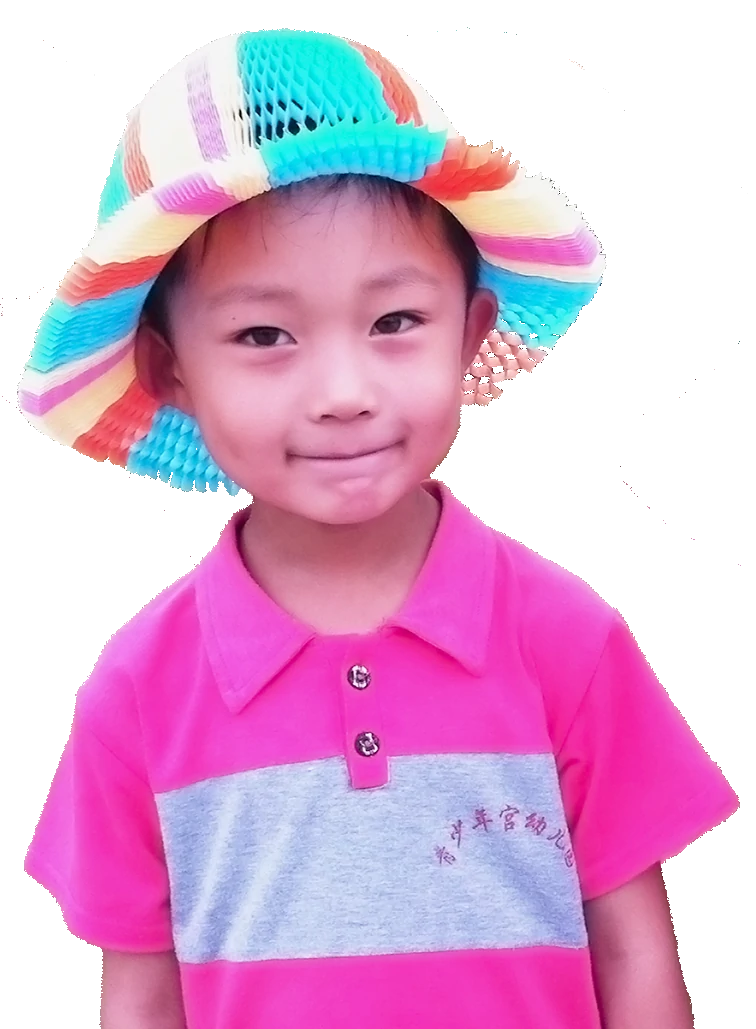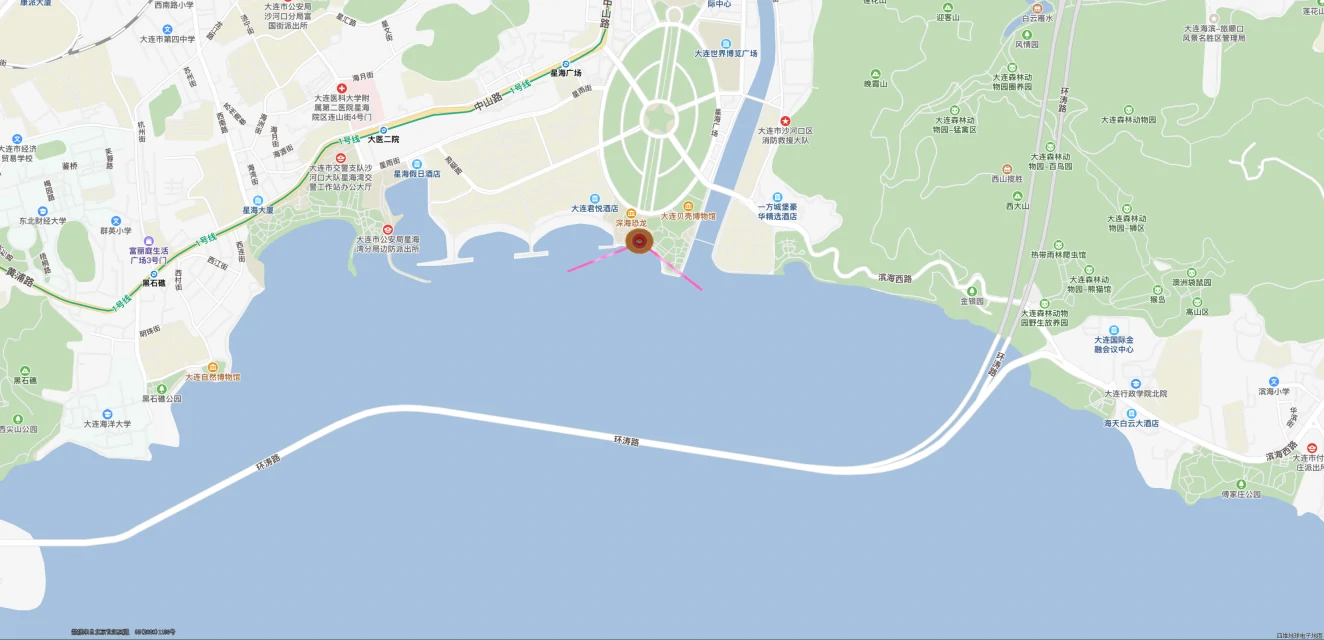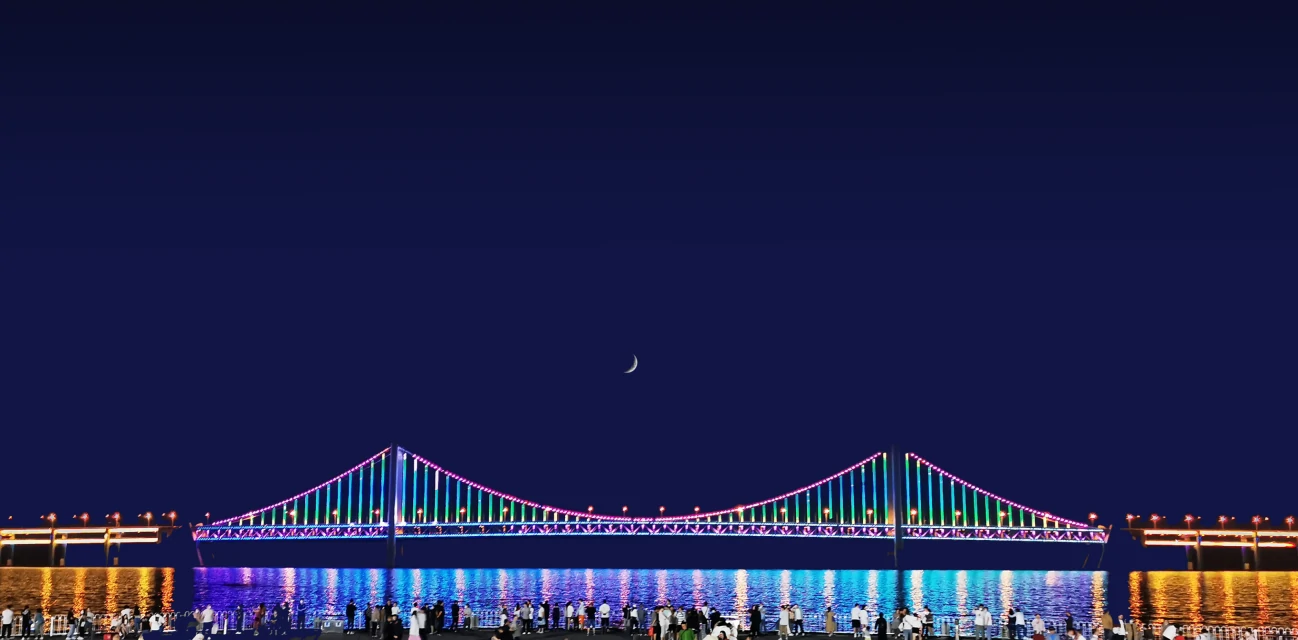关于两张照片

· 一 ·

↑这是一张合成的照片。背景摄于2022年7月24日,拍摄对象为大连市沙河口区星海广场。
This is a merged photo. The background was shot on July 24, 2022, the shooting spot of which located at Xinghai Square, Shahekou District, Dalian.
背景素材:
 设备: VOG-AL10(华为自带长焦镜头)
设备: VOG-AL10(华为自带长焦镜头)
焦距: 105mm(等效35mm胶片焦距)
拍摄位置:1
经纬度: g121.58709347,38.87754517(GCJ-02坐标2)
凯立德K码: 8ti6fb01x

而前景的拍摄时间较为久远,摄于2012年9月11日,拍摄对象为6岁的我。
But the foreground was not shot recently, which was on Sep. 11, 2012 and whose object was six-year-old ME.

↓这是素材的来源图像,图中右一人物是杉
This is the source material,and the child on the right is my あね3.
 (↑这张照片由于拍摄时曝光不足而被我手动修复,所以颜色有点怪)
(↑这张照片由于拍摄时曝光不足而被我手动修复,所以颜色有点怪)
(This photo was recovered for underexposing, so the hue is kind of strange.)
设备: iPhone 4
焦距: 4mm(等效35mm胶片焦距)
拍摄位置:
经纬度: g122.96740383,39.69392652(GCJ-02坐标)
凯立德K码: 8aifgresx

而当我准备创作这张照片时,恰逢2022年9月12日——原照片摄像10年。
While I was preparing for photoshopping, I accidentally found that it was just the 10th anniversary of shooting the original photo.
十年の隔たり、人と景色が溶け合う。若いあの時の僕はタイムマシンに乗ってタイムスリップしたようだ。
『读音:jinen no pedatari、hito to kejiki nga toke auu、wakaii ano ji no boku wa taimumashin ni no’tte taimusuripushita youda
※第一句话中
-
“の”(音no,以下括号内若无特殊说明,都是标音)表示领属,即“之”
-
“隔たり”(pedatari)是名词
-
“と”(to)是连词“和”
-
“が”(nga或ga)是助词
-
“溶け(toke)”“合う(aū)”都是动词
※第二句话中
-
“若い”(wakaii)是形容词,其中“若”同“弱”,意思是幼小的。 这不禁使我们想到了汉语的日语外来语(和制汉语)、生物学名词“若虫”。这是对不完全变态发育的昆虫幼体的称呼,它与“若い”中“若”的意义相同。
-
“あの”(ano)是“那个”
-
“僕”(boku)是男子青少年时的自称
-
“は”(ha,读wa)是助词,提示主题
-
“タイムマシン”(taimumashin)是片假名转写的英语外来语,词源是“time machine”
“に”(ni)是助词,表示在…之上
-
“乗って”(no’tte)是动词原形“乗る”的て形
-
“タイムスリップ”(taimusuripu)是片假名转写的英语外来语,词源是“time slip” 它加上“した”(shita)变成过去式
-
“…ようだ”(yūda或youda)表示“好像…”
粗暴地连起来就是: 十年 之 隔,人 和 景色 融 合。幼小的那个我 时光机上 乘坐 穿梭时间了 好像。
由于日语的SOV语序,调整谓宾,再把状语放到恰当的位置,你就能理解啦😀 此之谓“像翻译文言文一样翻译外语” 』
|-使用30min找到的生僻字谐音:蓟媆 耨 渒笪阘蠡、翮瘗婾 婾 蒈蓟礊瘗 (前面接-ng的)啊 婾蒈 鏖鋈、腽衉瘗 啀槈 髉廤 腽 譶瘗茻孖鑫 麑 耨炱 譶瘗鈻擈銐醯闧 猷龘(汉语里“-ng”尾韵母后的“啊”变音为“nga”是我们的常识)-|
· 二 ·
 设备: VOG-AL10(华为自带短焦镜头)
设备: VOG-AL10(华为自带短焦镜头)
焦距: 主体6mm(等效35mm胶片焦距)
拍摄位置:
经纬度: g121.58676624,38.87595195(GCJ-02坐标)
凯立德K码: 8fi6fny0x

看到如此巨大的月亮,经常拍摄夜景的你一定觉得不可思议。通常,在拍摄城市与月亮的合影时,月亮总是渺小得几乎是照片上的一个点。这自然是有原因的:
It is almost incredible to see such a immense moon! Sure, but there are scientific reasons of the phenomena:
 (对照图中画幅为默认)
(对照图中画幅为默认)
在有参照物的情况下,参照物和对象的视角大小之比决定着对象的观感大小。
In the case of a reference object, the ratio of the viewing angle of the reference object to the particular object determines the sensory size.
以镜头焦距6mm为例,倘若在该条件下拍摄月亮(对象)与地面景物(参照物)的合影,地面景物的视角大于114°;而在地球上,镜头里月亮的视角通常只有0.5°。二者相差228倍,根本不在一个数量级上。
Taking the lens focal length of 6mm as an example, if the moon (object) and the ground scene (reference object) are taken under this condition, the angle of view of the ground scene is greater than 114 °; On Earth, the angle of view of the moon in the lens is usually only 0.5 °. The difference between the two is 228 times, which is not in the same order of magnitude.
我们要尽量减小参照物的视角(即增大焦距)。
We should try to reduce the angle of view of the reference object (that is, increase the focal length).
那么如何增大焦距?很简单,尽量增大镜头与参照物的距离,并使用长焦镜头来确保预定焦距在镜头可变焦距范围内。
So how to increase the focal length?Increase the distance between the lens and the reference object as much as possible, and use a telephoto lens to ensure that the predetermined focal length is within the zoom range of the lens.

如上图(来源于网络),它的实际拍摄位置与画面中的教堂相距超过2km(如下图)
As above (from the network), its actual shooting spot is more than 2km away from the church(as is on the map below) .

显然,手机内置摄像头的焦距是无法满足要求的 。对于我的情况,如果用手机自带的长焦镜头拍摄,效果可能是这样的↓
Obviously, the focal length of the built-in camera of the cellphone cannot meet the requirements. For my case, if I use the telephoto lens of my phone, the effect may be like this ↓

况且,由于6月5日月亮要等到凌晨2:20左右才会到达东方地平面上,要到达如图中的正南位置时,已经是次日9时;同时,我也没有能力找到一个星海广场以北遥远的拍摄地点。因此,我只能采用拍摄两张照片后合成的方式了。
Moreover, since the moon will not reach the eastern ground level until around 2:20 a.m. the next day on June 5, while it will be 9:00 the next day before it reaches the due south position as shown in the picture ,and, at the same time, I can’t find a shooting place far north of Xinghai Square. Therefore, I can only take two photos and then merge them.
因此,拍摄分为两个部分:
Thus, the shooting is divided into two parts:
20时,在星海广场,拍摄星海湾跨海大桥;
At 20:00, at Xinghai Square, shooting Xinghai Bay Bridge;
凌晨,在大连东港,用200mm长焦镜头拍摄从东方升起的月亮。
In the early dawning, shooting the moon rose from the east with a 200mm telephoto lens in Donggang Business District, Dalian.
为了美观,改变月亮的朝向与夜空的颜色,加以裁剪,于是:
For the sake of beauty,I change the orientation of the moon and the color of the night sky, and cut them, so:

↑星海湾大桥的炫目灯光映在海面上,上凸的梁体彰显工业的美感;
天幕中的弯月明亮夺目,胜过任何一个夜晚。
The dazzling lights of the Xinghai Bay Bridge are reflected on the sea, the convex beam body shows the aesthetic of industry, and, in my eyes, the crescent moon is seemingly brighter than that in any other nights.🎇

